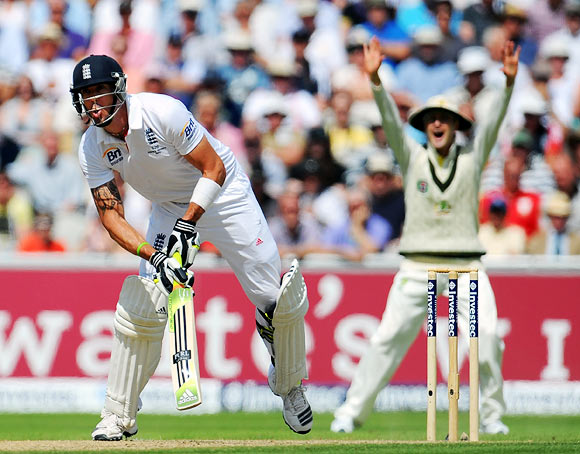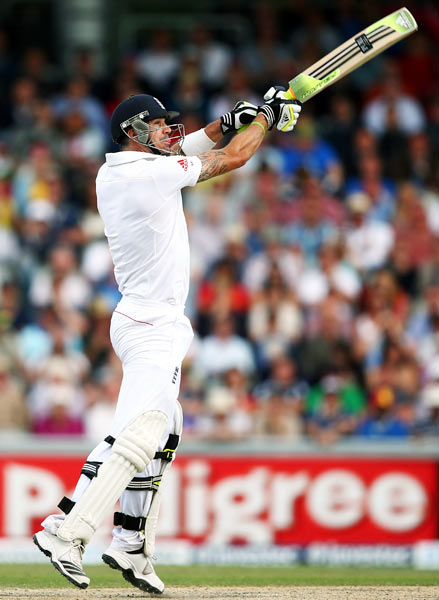
Australia captain Michael Clarke backed his players on Wednesday, stating that none of his teammates used silicone tapes on their bats to beat the controversial Decision Review System.
The DRS is in the news in the ongoing Ashes for all wrong reasons after concerns were raised following England batsman Kevin Pietersen's dismissal in the final innings of the third Test.
Pietersen was adjudged out after an edge was not picked up by Hotspot but confirmed by 'Snicko' technology and other audio evidence.
But reports soon emerged in Australian media that Pietersen might have used silicon tapes on his blade to subvert Hot Spot technology.
According to reports, the ICC has also sent its director of cricket operations, Geoff Allardice, to Durham this week to talk to both the sides and clarify the confusion over the DRS.

Clarke, however, defended his team and said no player was using silicon tape for cheating the technology in any way.
"I find the accusation quite funny. I can't talk for everybody but if it is the case we are talking about cheating, I can tell you there is not one person in the Australian change rooms who is a cheat," Clarke was quoted as saying by Sydney Morning Herald.
"That's not the way we play cricket. I know no one is going to the extreme of saying put this on your bat because it will help you beat Hot Spot," he added.

Clarke said covering bats with fibre glasses was a common practice but he has never heard of anything which lessens the impact of Hot Spot.
"I've used fibreglass facing on my bats since I got my first bat from Slazenger when I was 12. I used a fibreglass face on the bat because we couldn't afford two or three or five or 10 cricket bats," he said.
"Because modern bats are pressed and are soft, you put a cover on it to protect the bat and make it last longer. A lot of players use that since I've been playing cricket.
"I didn't know there was such a thing you could do to hide nicking the ball on Hot Spot. I wouldn't think it would make any difference. I've never heard of anyone doing it," Clarke added.

On Wednesday morning, Australia’s Channel Nine television claimed that Hot Spot was failing to detect edges hitting bats because of batsmen applying silicone tape - a practice permitted by the laws of cricket. The Australian report specifically mentioned Pietersen and referred to his dismissal in the Third Ashes Test.
Pietersen denied the reports with an angry outburst in social networking site Twitter.
"Horrible journalism yet again! My name brought up in hotspot crisis suggesting I use silicon to prevent nicks showing! Such hurtful lies," he tweeted.
"I am never afraid of getting out! If I nick it, I'll walk. To suggest I cheat by covering my bat with silicon infuriates me," he wrote.